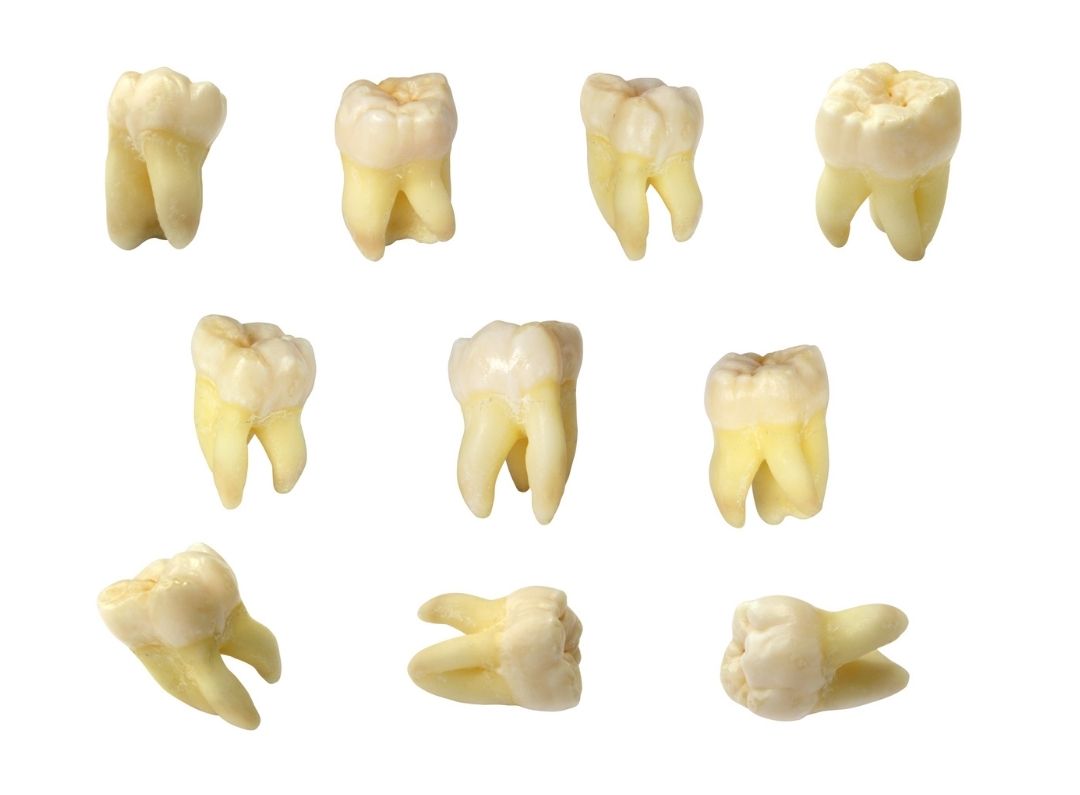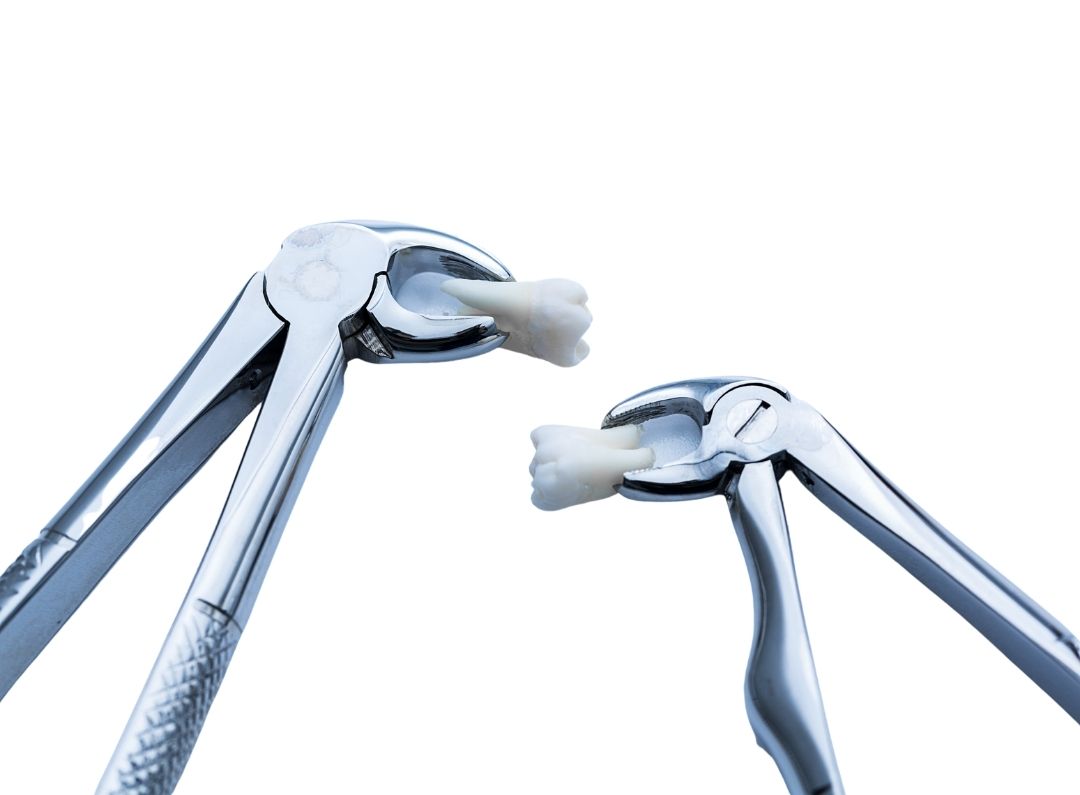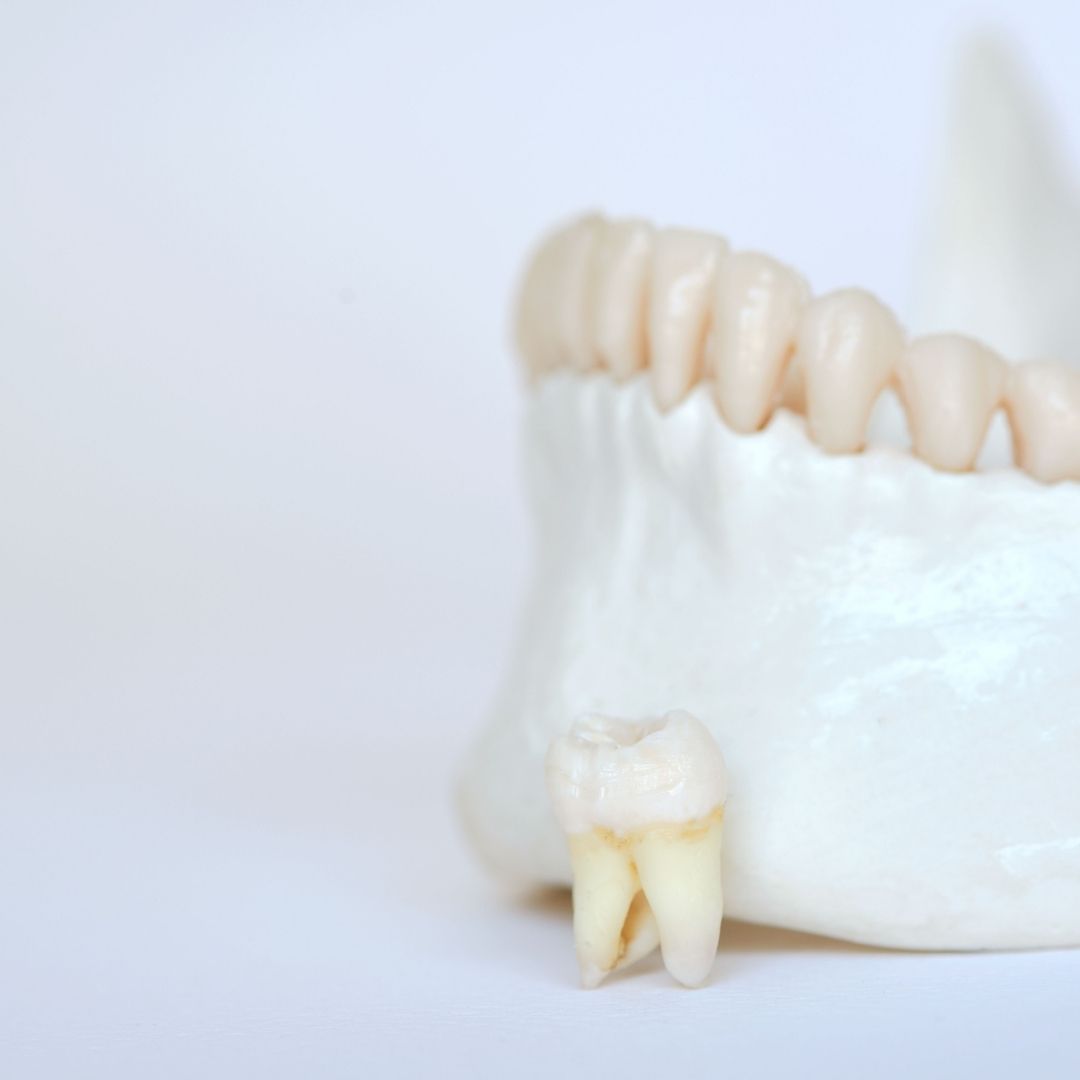If you experience occasional or constant pain in the back of the jaw that spreads towards the ear, it is possible that it is caused by the eruption of wisdom teeth. If the wisdom teeth start to cause problems and their growth causes pain, swelling of the gums in the area of eruption, or pain in the jaw joint when chewing, it is necessary to perform an examination as soon as possible in order to assess whether tooth extraction is indicated.
The eruption of wisdom teeth or third molars depends on the individual – some people have them, and for some, they never grow.
With the evolution of man, eating habits changed and the jaw of today’s man is much narrower compared to our ancestors. Some people don’t have the buds of third molars at all because they don’t need them for the modern way of eating and living.
Alveotomy is the surgical removal of impacted, partially impacted, or retained teeth.
Impacted teeth are those that do not grow into a full dental arch due to a physical barrier. This is most often due to a lack of space in the dental arch or because of the density of the bone above the crown of the tooth, which prevents the teeth from erupting properly.
Unlike impacted teeth, retained teeth do not have any physical barrier to the eruption, and the causes of their non-eruption can be different, such as the wrong direction of eruption.
We confirm their presence with an X-ray. This is most often the case with wisdom teeth, although upper canines and lower premolars can also be impacted or retained.
At the Polyclinic, we provide each patient with detailed and precise instructions on the course of postoperative recovery after surgery
The moment a wisdom tooth starts to cause problems, our doctors decide to perform an alveotomy if it is located in the lower jaw.
Serious indications for wisdom tooth extraction include constant and recurring inflammation of the gums that partially or completely covers the crown of the tooth (pericoronitis), presence of purulent discharge, extensive carious destruction that cannot be adequately repaired with conservative procedures, and endangerment of the adjacent tooth
The alveotomy procedure involves removing part of the bone around the tooth to allow easier access to the tooth.
The procedure is performed under local anesthesia, starting with an incision of soft tissues, followed by bone removal and tooth extraction using surgical instruments, and wound treatment and suturing.
The phase following the tooth extraction is very important because that’s when problems can occur. It is important to refrain from tobacco, hot drinks, and carbonated drinks.
After the procedure, it is recommended to ice the area of the extraction.
Depending on the severity of the extraction, patients are sometimes prescribed antibiotics and depending on their pain level, they may also take analgesics.
Pain and swelling, if present, usually get better in 3 – 4 days.

Jaw pain and swelling

Surgery

Wisdom tooth extraction









